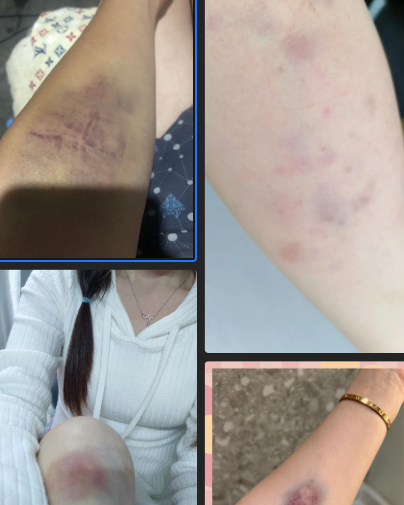
These Mysterious Bruises on Your Body Could Mean You Have… See More
You notice it while changing clothes or stepping out of the shower—a purple blotch on your arm, a bluish mark on your shin, a patch of discoloration near your thigh. You don’t remember bumping into anything. There was no fall, no collision, no obvious injury. Yet there it is: a bruise that seems to have appeared out of nowhere.
For many adults over 50, these unexplained bruises become a regular occurrence. It’s easy to dismiss them as yet another sign of “getting older”—thinner skin, more fragile blood vessels, maybe being a little clumsier than you used to be. But what if these mysterious marks are trying to tell you something important about your health? What if they’re not just random discolorations but visible clues to an underlying condition that needs attention?
Unexplained bruising, especially when it happens frequently or in unusual places like the torso, back, or palms, can be a sign that your body’s clotting system isn’t working properly. It might indicate something as simple as a vitamin deficiency—or something as serious as a blood disorder.
One of the most common causes of easy bruising in older adults is medication. Blood thinners like aspirin, warfarin, or newer anticoagulants are designed to prevent clots, but they also make bruising more likely. Steroids, used for conditions like asthma or arthritis, can thin the skin over time. Even common over-the-counter drugs like ibuprofen can contribute to bruising when used regularly.
Nutritional deficiencies are another frequent culprit. As we age, our bodies absorb nutrients less efficiently. Lack of vitamin C weakens blood vessels, making them more prone to leakage and bruising. Vitamin K is essential for clotting—without enough of it, even minor bumps can lead to significant bruises. Vitamin B12 deficiency, common in older adults, can affect platelet production and function.
Sometimes, bruising can signal more concerning conditions. Low platelet counts, a condition known as thrombocytopenia, can be caused by autoimmune disorders, infections, or bone marrow problems. Liver disease can impair the production of clotting factors, leading to easier bleeding and bruising. In rare cases, unexplained bruising can be an early sign of leukemia or other blood cancers.
It’s not just the presence of bruises that matters—it’s their pattern. Bruises that appear suddenly without injury, occur in unusual locations, are unusually large or painful, or take longer than usual to heal should never be ignored. So should bruises accompanied by other symptoms like fatigue, frequent nosebleeds, bleeding gums, or tiny red spots on the skin called petechiae.
The good news is that most causes of easy bruising are manageable once identified. A simple blood test can check your platelet count and clotting function. Adjusting medications, addressing nutritional deficiencies, or treating underlying conditions can often reduce or eliminate the problem.
Your skin is your body’s largest organ, and sometimes it shows what’s happening inside. Those mysterious bruises might be more than just age spots—they could be messages worth reading.